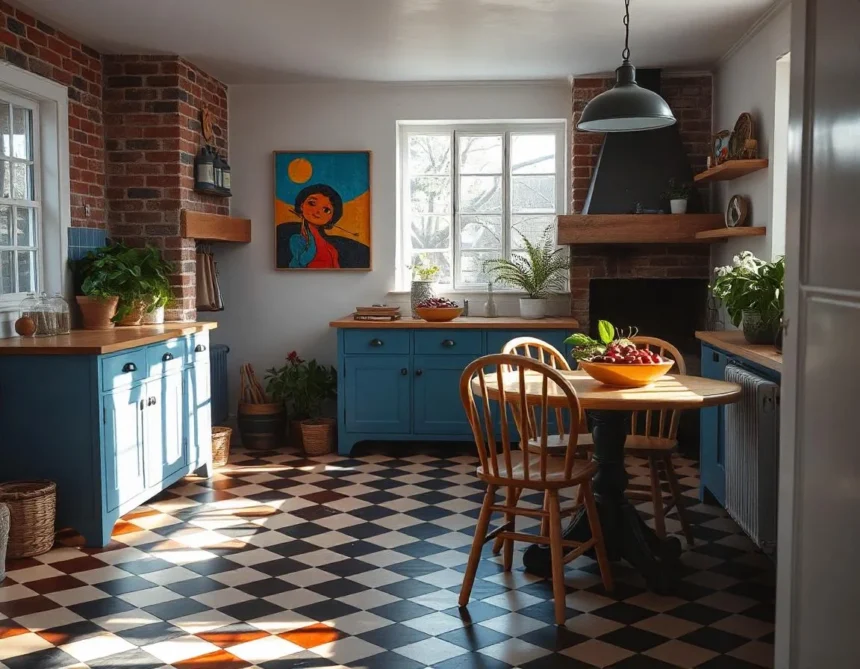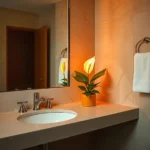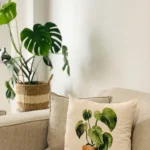Adding greenery to your space is not a trend; it’s a lifestyle that brings warmth, serenity, and a touch of the outdoors into your modern home. Whether you have wondered how to style plants in a modern home, this comprehensive guide will walk you through everything you need to know in creating a stylish, plant-filled sanctuary that elevates not just your decor but also your well-being.
Why Style Plants in a Modern Home?
More than anything else, plants add aesthetic appeal to your home. They improve air quality, reduce stress, and build a serene environment that is quite promotive of relaxation and creativity. Plants bring a perfect balance in modern homes where minimalism and functionality generally take center stage by introducing natural elements that soften the sharp lines and add some vibrant colors.
Benefits of Incorporating Plants
- Air Purification: Snake plants, peace lilies, and many other plants found indoors are excellent houseplants that filter toxins from the air.
- Aesthetic Enhancement:Color, texture, and life-plants make any room a lot more welcoming.
- Mental Health: It has been shown that tending plants reduces stress levels and generally uplifts a person’s mood.
- Sound Absorption: Large plants absorb background noises and quiet the environment.
Choosing the Right Plants for Your Modern Home
Before delving into the ways of styling plants in a modern home, let’s first select some great plants that would work for your interior design and be suitable for your lifestyle. Following are a few popular types that grow well inside a house with minimal care:
Low-Maintenance Plants
- Snake Plant (Sansevieria): This has upright growth, with great tolerance to low light..
- ZZ Plant (Zamioculcas zamiifolia): It displays glossy, dark green leaves and needs less frequent watering.
- Pothos (Epipremnum aureum): The vine that can adapt very well whether the light condition is low, average, or bright.
Statement Plants
- Fiddle Leaf Fig (Ficus lyrata): The large, smooth leaves of this tree make it a real showstopper in any room.
- Monstera Deliciosa: Recognized by its split leaves and generally quite dramatic.
- Bird of Paradise (Strelitzia): Striking, with banana-like leaves that add great height and drama.
How to Style Plants in a Modern Home: Step-by-Step Guide
Styling plants within a modern home involves more than just putting them in pots and setting them around the house. It is all about creating this cohesive look that works along with your already existing decoration and then accentuating the natural beauty of your plants. Here’s how to do that:
1. Assess Your Space and Lighting
The most important thing is to understand the lighting in your space. While most indoor plants require indirect sunlight, some, like snake plants and ZZ plants, can survive under low light conditions. Use a simple app like Plant Light Meter to determine how much light various areas of your home receive. This will help you decide where each plant should go for optimal growth.
2. Choose Complementary Containers
The right container can give it a boost in aesthetics that ties them into the design of your home. Newer homes tend to favor sleek, minimalist designs. Contemplate using containers with clean lines and neutral colors. Ceramic, concrete, and metallic materials are great options for contemporary decor.
Container Ideas:
- Geometric Planters: Add modernity with bold shapes and clean lines.
- Hanging Pots: Make use of the vertical space and add visual interest by hanging plants from the ceiling.
- Terrariums: For small plants and succulents, adding decor to your shelves or tables.
3. Create a Focal Point
Use a large statement plant to be the focal point of a room. For example, place a tall fiddle leaf fig in the corner of your living room and draw the eye in. Place smaller plants around it to give a lush, layered look that adds to the room’s overall ambiance.
4. Mix and Match Textures and Heights
Mixing up the textures and heights of your plants adds a lot of depth and interest to your decor. Make a dynamic display by pairing plants with different shapes and sizes of leaves. As an example, balance a monstera, with broad leaves, with the lacy fronds of a fern.
5. Utilize Shelves and Tables
For this purpose, the most appropriate are shelving units and tables. Group them to create a mini indoor garden that may serve as a beautiful centerpiece. Consider the following tips:
- Grouping: Plants of similar sizes and types should be grouped together.
- Spacing: Leave enough space between plants for growth and air circulation.
- Layering: This involves planting taller plants at the rear and smaller ones in the front for a tiered effect.
6. Incorporate Greenery into Every Room
Plants can add to the aesthetic of any room, from bedroom to bathroom. Here are a few ideas:
- Living Room: Large statement plants and mix trailing with upright ones.
- Bedroom: Go for calming plants like lavender or aloe vera that are known to be relaxing.
- Bathroom:Ferns or orchids are just two examples of the many types of plants that love moist conditions.
- Kitchen: Herb gardens are a beauty to behold and very functional in the kitchen.
7. Pay Attention to Color Coordination
Green might be the dominant color for most plants, but adding accessories and pots in complementary colors elevates the look of greenery. Neutral tones-white, gray, and black-offer a sleek background that allows greens to be the star. Colorful pots, on the other hand, will add the much-needed splash of color to your space.
8. Experiment with Plant Placement
Do not be afraid to experiment with placements to find what works for the space. Try setting plants on windowsills, floating shelves, or hanging them in macramé holders. The key is seamlessly integrating them into your home’s design to make them feel like an extension of your decor.
Advanced Tips for Styling Plants in a Modern Home
Now that you know the basic, here’s how you take your plant styling up a notch with some advanced tips:
1. Create a Plant Gallery Wall
Devote one wall to showing different plants in different containers. It is a beautiful sight and a great way to use space vertically. Match the pots for a uniform look or mix and match for an eclectic look.
2. Integrate Technology
The devices for smart plant care will let you maintain your indoor garden effortlessly. Automated watering systems, grow lights, and plant monitors make sure your plants get the right amount of water and light, even when you are busy.
3. Use Plant Stands and Shelves
Add style with plant stands and shelves that elevate your plants. Not only will this add depth to the room, but it can also showcase your plants like works of art. Opt for tiered stands or modular shelving units to customize the space.
4. Incorporate Seasonal Plants
Rotate your plants through the seasons to maintain that freshness in your dcor. Seasonal plants come in unique colors and textures that add to what reflects the time of the year, keeping your home vibrant and alive.
5. DIY Plant Projects
Get creative and make your own DIYs to add a personal touch to your plant displays: make macramé hangers, paint or sew fabric on pots, create unique terrariums. All of these little personalized touches will add character and uniqueness to your plant styling.
Maintaining Your Styled Plants
Styling plants in a modern home is not just about placement; it’s also about maintenance. Healthy plants look better and will last longer, making sure your decor remains amazing.
1. Watering
The most common mistake is overwatering. Make sure that each plant is watered according to its needs. For instance, succulents require less frequent watering compared to tropical plants like philodendrons.
2. Light Requirements
Let your plants receive the right amount of light. Move them if need be to create the most favorable conditions for their survival. Use sheer curtains to diffuse harsh sunlight or put plants near windows to take advantage of natural light.
3. Pruning and Cleaning
Prune regularly any dead or yellowish leaves to keep your plants always at their best. Dust the leaves with a wet cloth so that the leaves can photosynthesize easily.
4. Fertilizing
Fertilize plants with a balanced fertilizer to provide your plants with all the nutrition they require for healthy development and good foliage.
5. Pest Control
Monitor your plants for any signs of infestation by spider mites or aphids. Use organic remedies or insecticidal soap to treat the infestation without harming your plants.
Incorporating Modern Design Elements with Plants
To really learn how to style plants in a modern home, incorporate modern design elements that complement your greenery.
1. Minimalist Decor
Less is more, they say, and so there is minimal overcrowding but rather a few well-placed plants. The clean line and uncluttered space let the plants come into view as focal pieces.
2. Industrial Accents
Blend together plants with industrial decor, which will create a modern edge by pairing earthy greenery with spacey elements like metal planters, concrete pots, or anything with exposed pipes.
3. Scandinavian Simplicity
Follow Scandinavian principles: light-colored pots, natural materials, and simple arrangement. This kind of style would mean functionality, along with the beauty to share a harmonious balance with your plants.
4. Monochromatic Schemes
Stick with one color for an ultra-chic look. The green plants paired with black, white, or gray decor makes for a real modern effect.
5. Geometric Shapes
Incorporate geometric shapes into your planters and accessories. Triangular shelves, hexagonal pots, and angular planters give your plant styling a modern feel.
Sustainable Plant Styling Practices
Styling plants in modern homes can also be earth-friendly. Following are a few sustainable practices that one can consider:
1. Choose Native Plants
Choose plants native to your area, as they’re most likely to grow just fine with less interference and help the local ecosystem.
2. Recycle and Upcycle
Use recycled materials for planters or use old items like mason jars and tin cans for creative planters.
3. Organic Care Products
Organically fertilize or use pest control methods to help maintain your plants without harm to the environment.
4. Water Conservation
Put into place some water-saving techniques, such as drip irrigation or self-watering pots.
5. Sustainable Sourcing
.
Buy plants from native nurseries and avoid plants known to be endangered or over-harvested.
Common Mistakes to Avoid When Styling Plants
To make sure your plant styling efforts are successful, try to avoid the following:
1. Overcrowding
A too-thick planting inside the space may make a room feel cramped and result in impeded air passage, thus negative consequences of plants.
2. Ignoring Light Requirements
Not all plants require the same amount of light. Make sure each plant is placed in an area that meets its specific light requirements to prevent poor growth.
3. Using the Wrong Pot Size
Choose the right size pot, considering the future growth of your plant. Small pots can constrict root growth, while overly large ones can cause overwatering.
4. Neglecting Plant Health
Regularly check your plants for signs of stress, pests, or disease. The sooner these are dealt with, the healthier and more beautiful your plants will be.
5. Inconsistent Care
.
Develop a routine of caring for your plants to maintain their health and appearance through regular watering, pruning, and cleaning.
Inspiring Plant Styling Ideas for a Modern Home
Seeking some inspiration on the styling of plants in a modern home? Here are a few really creative ideas to get you started:
1. Botanical Corner
Devote a corner of a room to an assortment of plants: floor, hanging, and tabletop combined for a lush, green oasis.
2. Plant Shelfie
Arrange your plants artistically on the bookshelf for an appealing view. Add a mixture of heights and textures to give the shelf interest, and make it pop.
3. Green Kitchen
Incorporate plants into the kitchen to add decor through herb gardens, small potted plants on the counter, or even plants above the window for fresh, home-grown greens.
4. Bathroom Greenery
Add some moisture-loving plants, such as ferns and orchids, to your bathroom. Place them on countertops, shelves, or hang them from the ceiling to create a spa-like atmosphere.
5. Bedroom Retreat
Design a calming bedroom environment with plants that help induce relaxation, such as lavender, snake plants, or peace lilies. Place them on your bedside tables or windowsills to enhance the serene ambiance.
6. Outdoor-Indoor Transition
Blur the edges between indoors and outdoors by designing plants around big windows or glass doors. Use planters for your plants that will enhance both your interior and exterior space for continuity.
Integrating Technology in Plant Styling
Go smart with your plant styling and maintenance routine. Smart devices will help you keep your plants healthy and thriving with minimal effort.
1. Smart Planters
Invest in Wi-Fi-enabled smart planters that monitor soil moisture, light levels, and temperature. Some can even send alerts to your smartphone when your plants need attention.
2. Automated Irrigation Systems
Set up automatic watering systems to ensure that your plants are getting the right amount of water, even when you are not around.
3. Grow Lights
Supplement the natural light with grow lights, especially in areas with very limited sunlight. The LED grow lights are energy-efficient, providing the right spectrum that plants need to grow.
4. Plant Care Apps
Use plant care apps for tracking watering schedules, getting care tips, and diagnosing health problems in your plants. Such apps will be a great helper for both beginners and experienced plant parents.
Sourcing High-Quality Plants and Accessories
Styling plants effectively in a modern home requires high-quality plants and accessories. The following are some tips on where to find the best options:
1. Local Nurseries
Plants can be bought from local nurseries in support of the local economy. They usually have more varieties of plants, and the people working there are very well informed about how to care for them.
2. Online Plant Shops
Consider browsing online stores selling plants, as they ship plants directly to your doorsteps. The choice would usually be very extensive and include descriptions, thus allowing one to know about a specific plant more.
3. Home Improvement Stores
The large home improvement centers commonly have several indoor plants along with pots, thus one can fulfill most of his needs within a single visit.
4. Farmers Markets
Visit farmers markets for unusual or locally grown plants. The farmers markets are very good at finding those unusual plants and supporting local growers.
5. Sustainable Plant Suppliers
Choose suppliers who have been committed to sustainability and traceable sources. This is to ensure that your plants are grown in an environmentally responsible way.
Decorative Plant Accessories to Enhance Your Style
Accessorizing your plants can elevate their aesthetic and seamlessly incorporate them into your modern decor. Following are some of the essential accessories for them:
1. Stylish Pots and Planters
Choose pots that blend in with your home’s color scheme and style. In terms of material, modern-looking options include ceramic, terracotta, metal, or concrete.
2. Plant Stands and Shelves
Display your plants at different heights to add visual interest with the help of plant stands and shelves. These also ensure space optimization in organizing plants.
3. Macramé Hangers
Add a touch of bohemian vibe with the macramé plant hangers that are perfect to hang up your trailing plants and create a dynamic, layered look.
4. Decorative Pebbles and Stones
Top off your pots with decorative pebbles or stones that add texture and catch any soil splashing out at the time of watering..
5. Plant Care Tools
Invest in essential plant care tools such as watering cans, pruning shears, and moisture meters that would keep your plants healthy and happy.
6. Lighting Fixtures
Add in some stylish lighting fixtures that will not only illuminate your plants but also add to the ambiance of your space.
Creating a Cohesive Plant Display
It also brings cohesion in all your plant styling within the house by making it a simple harmonious display.
1. Consistent Themes
Define the style that characterizes you, be it minimalist, Scandinavian, industrial, or bohemian-whatever is closer to defining your style. Let plants, containers, and accessories be appealing to this concept so that consistency in application can be assured.
2. Color Coordination
Neutral shades give an elegant outlook, while colored ones add to the playful attitude of coordinating color for your pot and accessories with that of the surrounding elements already installed.
3. Balanced Arrangements
Create a balanced arrangement in which the plants are evenly distributed around the room. This avoids having all the plants piled in one place for the view.
4. Focal Points
Create focal points with larger plants or unusual combinations. This draws the eye and gives depth to your plant displays.
5. Symmetry and Asymmetry
You can also play with both balanced and unbalanced compositions to see what works best in your space. Symmetry brings order; asymmetry offers a feeling that’s dynamic, even modern.
Incorporating Plants into Different Rooms
Each different room in your house offers a distinct possibility with respect to styling plants. Here’s how to incorporate greenery into various spaces:
Living Room
The living room is usually the heart of the home, so it’s a perfect spot for big statement plants and lush greenery. Place a fiddle leaf fig in the corner, add a few smaller plants on the shelves, and use hanging plants to create a layered, inviting space.
Bedroom
Create a serene bedroom with the help of some relaxing plants, like snake plants, peace lilies, or lavender. Place them on your bedside tables or on window sills for enhanced relaxation and improved air quality.
Kitchen
Add freshness to your kitchen with herb gardens, small potted plants, or hanging planters. Fresh herbs add beauty and provide fresh ingredients for cooking.
Bathroom
Bathrooms are ideal for plants that love moisture, such as ferns, orchids, and air plants. Place them on countertops, on shelves, or hang them from the ceiling to create a spa-like ambiance.
Home Office
Improve your productivity and alleviate stress within the comfort of your home office using philodendrons, succulents, or spider plants placed on your desk or even put on the nearest shelf. This will create a comfortable work environment.
Hallways and Entryways
Plants add life and warmth, making great first impressions along hallways and entryways; place a tall plant or several smaller ones together for great texture.
Seasonal Plant Styling Tips
Adjust your plant styling to reflect the changing seasons, keeping your home decor fresh and exciting year-round.
Spring
Embrace the renewal of spring with blooming plants like peace lilies and orchids. Add pastel-colored pots and fresh flowers to brighten up your space.
Summer
Create a tropical vibe with large-leafed plants like monstera and bird of paradise. Use vibrant colors and bold patterns to enhance the lively summer atmosphere.
Autumn
Incorporate warm tones and seasonal foliage with plants like chrysanthemums and snake plants. Use earthy-colored pots and accessories to complement the autumn palette.
Winter
Choose evergreen plants and those with striking foliage to add greenery during the colder months. Use metallic or frosted pots to reflect the wintery theme.
Personalizing Your Plant Displays
Make your plant displays uniquely yours by adding personal touches and creative elements.
1. Custom Planters
Design your own planters with paint, decoupage, or other DIY techniques to match your style and personality.
2. Themed Arrangements
Create themed plant arrangements, such as succulent gardens, tropical paradises, or minimalist displays, to reflect your interests and tastes.
3. Artful Groupings
Arrange plants in artistic groupings, such as geometric patterns or asymmetrical displays, to add visual intrigue and creativity to your space.
4. Incorporate Art and Decor
Combine your plants with artwork and decor items that complement your plant displays. This creates a cohesive and visually appealing environment.
5. Seasonal Decorations
Add seasonal decorations like fairy lights, ribbons, or ornaments to your plant displays to celebrate holidays and special occasions.
Maximizing Small Spaces with Plants
Even in small apartments or rooms, you can effectively style plants in a modern home by using smart strategies to maximize space.
1. Vertical Gardening
Utilize vertical space by installing wall-mounted planters, hanging pots, or tiered plant stands. This not only saves floor space but also creates a stunning green wall.
2. Multi-Functional Furniture
Choose furniture pieces that incorporate plant storage, such as side tables with built-in planters or shelves designed to hold multiple plants.
3. Corner Plant Stands
Place tall plants in corners to make the most of unused space. Corner plant stands can hold several plants at different heights, adding depth and interest to the room.
4. Window Sills
Use window sills to display small potted plants, herbs, or succulents. This takes advantage of natural light and adds greenery without occupying much space.
5. Floating Shelves
Install floating shelves to hold a variety of plants. This keeps your floor space clear while showcasing your plant collection in an organized manner.
Eco-Friendly Plant Styling Practices
Incorporate eco-friendly practices into your plant styling to create a sustainable and environmentally conscious home.
1. Sustainable Materials
Choose pots and accessories made from sustainable materials like recycled plastic, bamboo, or terracotta to minimize your environmental impact.
2. Composting
Use compost to enrich your plant soil, reducing waste and providing your plants with natural nutrients.
3. Water Recycling
Implement water recycling systems, such as rain barrels or greywater systems, to conserve water and maintain healthy plants.
4. Native Plants
Opt for native plants that are well-suited to your local climate and require fewer resources to thrive.
5. Eco-Friendly Fertilizers
Use organic fertilizers and pest control methods to maintain plant health without harming the environment.
Final Thoughts on How to Style Plants in a Modern Home
Aesthetic appeal, serviceability, and care together combine in styling plants for modern homes. Chosen in coordination with your overall decoration, housed in stylish planters and pots with accessories to go with them, and taken due care of-your plants will form an eye-appealing harmonious living room expressing your individuality and making you much comfortable.
Whether you’re a seasoned plant parent or just starting your indoor gardening journey, these tips and ideas will help you master how to style plants in a modern home. Let the beauty of nature in, play around with different styles, and enjoy the calming presence that plants bring into your life.








